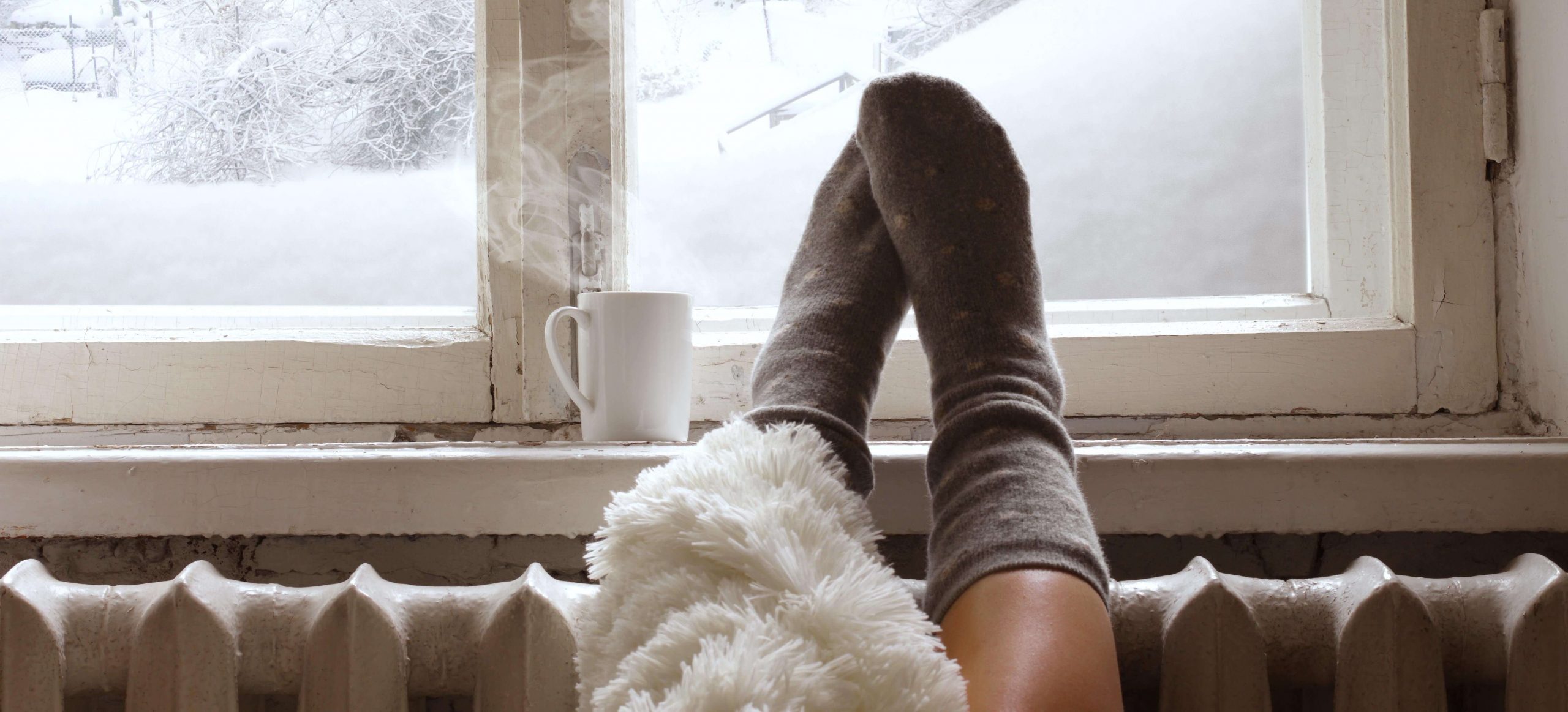Tips to Keep Your Home Warm This Winter

Learning how to keep your home warm during winter isn’t just about comfort. It’s about saving money, improving energy efficiency, and protecting your property.
Whether you’re sealing up air leaks, installing thermal curtains, or upgrading your insulation, there are affordable, effective ways to retain heat in your home this winter.
Why Is My House So Cold in Winter?
Many homes,especially older ones struggle to retain heat. Common causes include:
- Poor insulation in walls, attic, and floors
- Drafts around windows and doors
- Outdated or inefficient heating systems
- Lack of thermal barriers like curtains or carpets
- Air leaks and thermal bridging
Understanding these issues is the first step in learning how to keep heat in the house during winter.
Insulate Your Home Properly
“Winterproofing” is about preparing your entire home for cold weather. Winterize your home with thermal insulation and draft proofing.
Attic and loft insulation
Heat rises and escapes through your roof if not properly insulated. Adding attic insulation is one of the most cost-effective ways to keep your home warm. Use fiberglass, spray foam, or blown-in cellulose. Check for gaps or compressed insulation
Tinfoil behind radiators
By carefully putting tin foil behind each of your radiators, you can help to prevent unnecessary heat loss. Pay particular attention to those that are fitted to external walls. The reflective foil bounces heat back into the room rather than allowing it to escape through the wall.
If you prefer something specially designed for the purpose, we recommend radiator reflector panels, as recommended by the Energy Saving Trust.
The plastic panels are specially designed to create effective airflow behind the radiator, which pushes heat back into the room rather than letting it escape through the wall. If you need any help with the fitting process, consider booking a professional radiator service in London.
Wall and cavity insulation
If your home has cavity walls, they can be filled with insulating material to reduce heat loss. Solid walls may require internal or external insulation.
Floor insulation
Especially in older homes with timber floors, heat can escape through gaps.
- Use insulation boards under floorboards
- Add rugs or carpets for an extra thermal barrier
Keep your radiators clear
Try not to position furniture directly in front of any radiators, otherwise, you will restrict the heat distribution into the room. Instead, position your sofa and other furniture in areas that will keep your radiators clear and functioning at their best.
It might seem obvious, but long curtains will stop the heat from a radiator entering the room. The best length for your curtains is so that they sit flush with your window sill. If you do have any curtains that, when closed, cover a radiator, it’s definitely worth investing in a new set. Or you could simply tailor your existing curtains to a more suitable length.
Put a shelf above the radiator
Fitting a shelf above your radiators not only looks nice but also helps to direct heat from the radiator into the room. This technique is particularly useful if you have any radiators that are positioned directly below a window.
Setting your heating control timers
Timers and smart thermostats allow you to control your central heating system more efficiently. Try to never manually adjust your thermostat. A better technique is to set your timer for your heating to come on a little earlier to warm up your home.
It’s a myth that leaving your heating on all the time is cheaper than timing it to come on only when you need it. Your boiler will use more energy to heat a radiator from cold, but the cost is far less than keeping your boiler running 24 hours a day, even at if you set your central heating system to a low temperature.
A faulty boiler thermostat can be frustrating and costs-accumulating. As qualified heating engineers, we suggest homeowners to seek the help of professional local boiler repairs in London, so you can reduce this burden on your family budget. To avoid the nerves and hassle of unexpected malfuctions, you best bet is to carry out boiler servicing every year.
Double glazing
If your home has double glazing, you’ll benefit from reduced heat loss. For a cheaper alternative, you can pop down the high street and purchase a DIY double glazing kit from most good hardware shops. The kit contains a plastic film sheet that is fixed into place across the window frame.
The downside is that you won’t be able to open your windows unless you break the seal. However, during the colder month you probably won’t need or want to open most of the windows in your home, and if you did the cost of a new pack is minimal. For an extra layer of insulation, you might like to consider this DIY bubble-wrap double glazing solution that we came across.
Thick curtains
Windows are one of the most vulnerable areas with heat loss. Thick curtains are an effective way to reduce heat loss through windows and are more beneficial in homes that are not double glazed.
If you don’t want to buy a new set of curtains, then why not line them yourself? You can pick thermal lining or fleece up on the high street for a few pounds, and as long as you have a needle and thread, the rest shouldn’t be too difficult. Don’t worry if the stitching isn’t the best, it’ll only be on the reverse side of each curtain so won’t show.
Fit a pelmet
A pelmet is simply a ‘shelf’ or ‘box’ above your window that covers the top section of your curtains. Hidden pelmets are also available on the market that remains out-of-sight behind your curtain. Fitting a pelmet can help reduce the amount of cold air that enters your house through the window area.
Let the sunlight in during the day
Sunlight is basically free energy that you can easily harness by simply opening your blinds or curtains to allow the sunlight to penetrate the room. The UV rays from the sun pass through your glass window and become radiant heat once they enter the room. North and west-facing windows will benefit the most.
Chimney balloon
You may not realise it, but a lot of heat from your house can escape up your chimney. It’s quite common these days for fireplaces in homes to be unused. Many of us have a central heating system that renders the old-fashioned type open fireplace obsolete. If your fireplace is no longer used, it may be the case that heat within your heated home escapes through the chimney. An affordable solution is a chimney balloon. A chimney balloon is exactly that. An inflatable device that is inserted into the chimney breast and inflated so it seals off space.
Cover any bare floorboards
Exposed floorboards are the preferred choice in many homes nowadays. They are not a problem in the warmer months, but as soon as the winter approaches they are one of the major contributors to heat loss in your home. In fact, the National Energy Foundation claim floors account for up to 10% of heat loss.
Rugs are a great way to eliminate, or at least substantially reduce, heat loss through exposed floorboards. The great thing about laying down a rug for the winter months is that you can simply take it away again once the weather warms up!
Insulate your pipework
Hot water pipes work more efficiently if you insulate them. Insulating a hot water pipe is cheap and easy and can will not only save you money on your heating bills but you won’t need to wait as long in the mornings for your water to heat.
Use a programmable or smart thermostat
Smart thermostats can reduce energy bills while keeping your home warm by allowing you to:
- Set schedules
- Control zones (zone heating)
- Monitor energy use
Maintain your heating system. Regular maintenance can improve efficiency. Bleed radiators, clean filters, and service your boiler annually.
Seal Drafts and Stop Air Leaks
One of the simplest ways to prevent heat loss is to seal drafts. Common draft points:
- Windows and doors
- Letterboxes and keyholes
- Chimneys
- Attic hatches
Heat loss prevention solutions:
- Install draft stoppers or door sweeps
- Use weather stripping or foam sealant
- Block unused chimneys with a chimney balloon
Cheap Ways to Keep Your Home Warm Without Central Heating
- Use electric blankets or heated mattress pads
- Cook meals more often (ovens generate heat!)
- Close off unused rooms to concentrate heat
- Place foil behind radiators to reflect heat back into the room
- Light a fire in a sealed wood-burning stove
To Sum Up
To keep your home warm during winter, focus on proper insulation in the attic, walls, and floors to reduce heat loss. Seal drafts around windows, doors, and chimneys, and use thermal curtains or double glazing to improve heat retention. Upgrade your heating system with smart thermostats and supplement with energy-efficient heaters or small changes like rugs and reversed ceiling fans. Lastly, consider a home energy audit to identify hidden inefficiencies and take steps to winterize your entire home for maximum comfort and savings.
Tips to Keep Your Home Warm This Winter
Need help? Hire the London Property Service experts today by giving us a call on 020 3078 5920.




